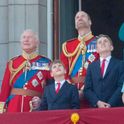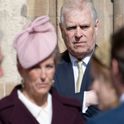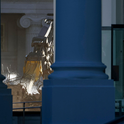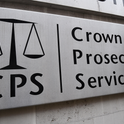The Crown is at a constitutional crossroads. This is not to say that it will necessarily change direction, but that there are now various routes available for the Crown as an institution, and that it is not bound to go down any particular route or another.
One direction of travel is that the monarchy continues in pretty much its current form, at least outwardly. This form is the post-war creation of “the firm”—an extended royal family, engaged with public affairs, non-partisan, and more important constitutionally for the power it prevents others from having than for any independent exercise of power itself.
Another direction of travel is towards republicanism. But there is no consensus on a replacement presidential system and how it would co-exist with a parliamentary democracy and cabinet government headed by a prime minister. The time-consuming process of conversion into a republic could make the exertions of Brexit seem like a day trip to Barnard Castle.
But there are routes other than to stay with the status quo or to insist on outright rejection. The current model, so familiar that it becomes difficult to imagine others, was a specific response to the conditions of the mid-20th century. Both Queen Elizabeth and Prince Philip had, in their respective families, seen monarchs losing their crowns, and had also watched royal families in other countries lose their position altogether. In 1952, the year the Queen ascended to the throne, 70 years of regnal stability would not have seemed inevitable, or even likely.
As we approach the country’s first ever platinum jubilee next year, the monarchy may again need to significantly reinvent itself. And this is not just because of any changing of the royal guard and the personality switch it brings.
One major potential shift could come with Irish unification or Scottish independence, or both. The United Kingdom of Great Britain and Northern Ireland has existed as such since 1922. The shorthand for our polity—the “United Kingdom”—prioritises constitutional form over territorial designation. A shared monarchy is expressly the unifying ingredient: the constitutional glue. So what happens when a kingdom remains, but without the “united”?
Perhaps England and perhaps Wales will continue on as the “United Kingdom,” like a pop group doing the nostalgia circuit with only one or two original band members. Yet that would still be a huge shift in the position of the Crown. The Queen’s grandfather was crowned as king of Great Britain and Ireland and emperor of India and the other dominions. Being left with a rump on the British mainland is quite the reversal in just over 100 years.
In more practical political terms, the curious compromise of public neutrality and private political engagement may also be unsustainable. Although supposedly above the political battle, both the prime minister’s weekly audience with the Queen and the ministerial lobbying of the Prince of Wales point to scope for real influence on public affairs. As the Guardian’s exposure of how the “Queen’s consent” procedure works in practice indicates, even general legislation is subject to vetting and potential veto if it interferes with the Crown’s private interests.
In broader constitutional terms, the old understanding of the powers and privileges of the Crown is under long-term judicial bombardment. The position of the Crown in our constitutional arrangements is being reconceptualised year by year. The seminal 1994 case of M v Home Office, in which it was held that, actually, a court could issue an injunction against a minister of the Crown, has had as its latest sequels the Gina Miller Supreme Court cases, where the justices held that a prime minister could not rely on the royal prerogative to make the Article 50 notification and that prorogation of parliament was justiciable. The “source” of public power is becoming legally irrelevant to the courts, even if it is based on the royal prerogative.
The Crown also continues to be the theoretical source of many elements of the state: the prerogative, acts of parliament with their royal assent, the appointment of judges, the established churches, the existence of bodies such as the BBC, the allegiance of the armed services and the sworn duty of constables to keep the Queen’s peace. Indeed, the Crown is the nearest thing in the United Kingdom constitution to a single coherent notion of the “state.” As the influence of European Union law on state liability falls away, the extent of the Crown’s powers may even become more practically important to constitutional lawyers.
The monarchy may wish to again become more visibly active in public affairs, or a reduced version of “the firm” may get on their bicycles and ride towards a more purely ceremonial role. Both possibilities would be a move away from the current post-war compromise. The direction to be taken, however, may be forced upon the monarchy by circumstances and wider changes. It would not be the first time the royals have been forced to adapt.













